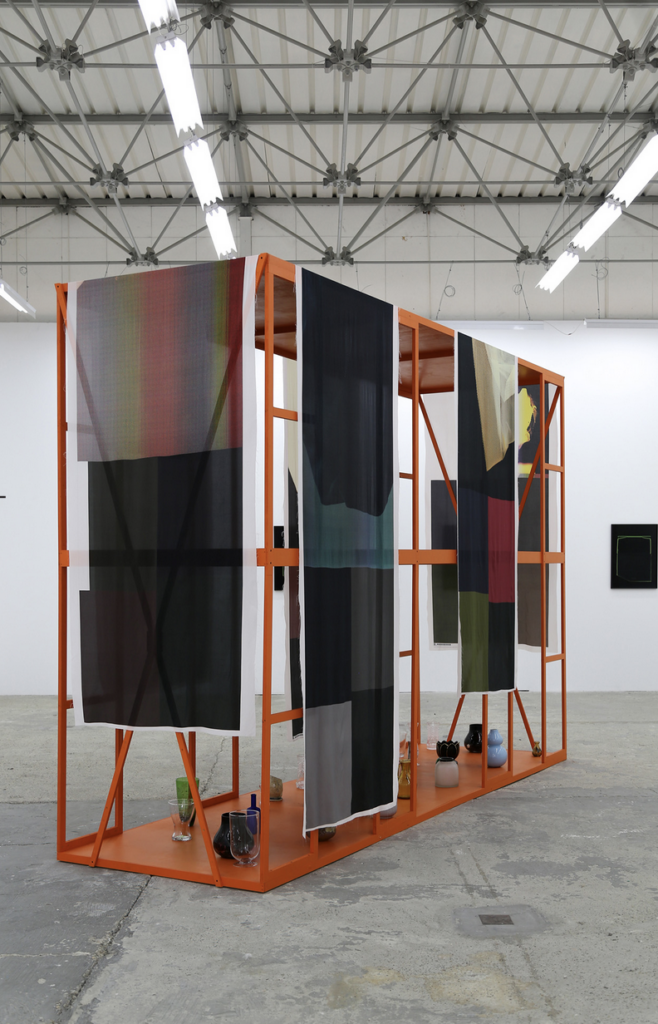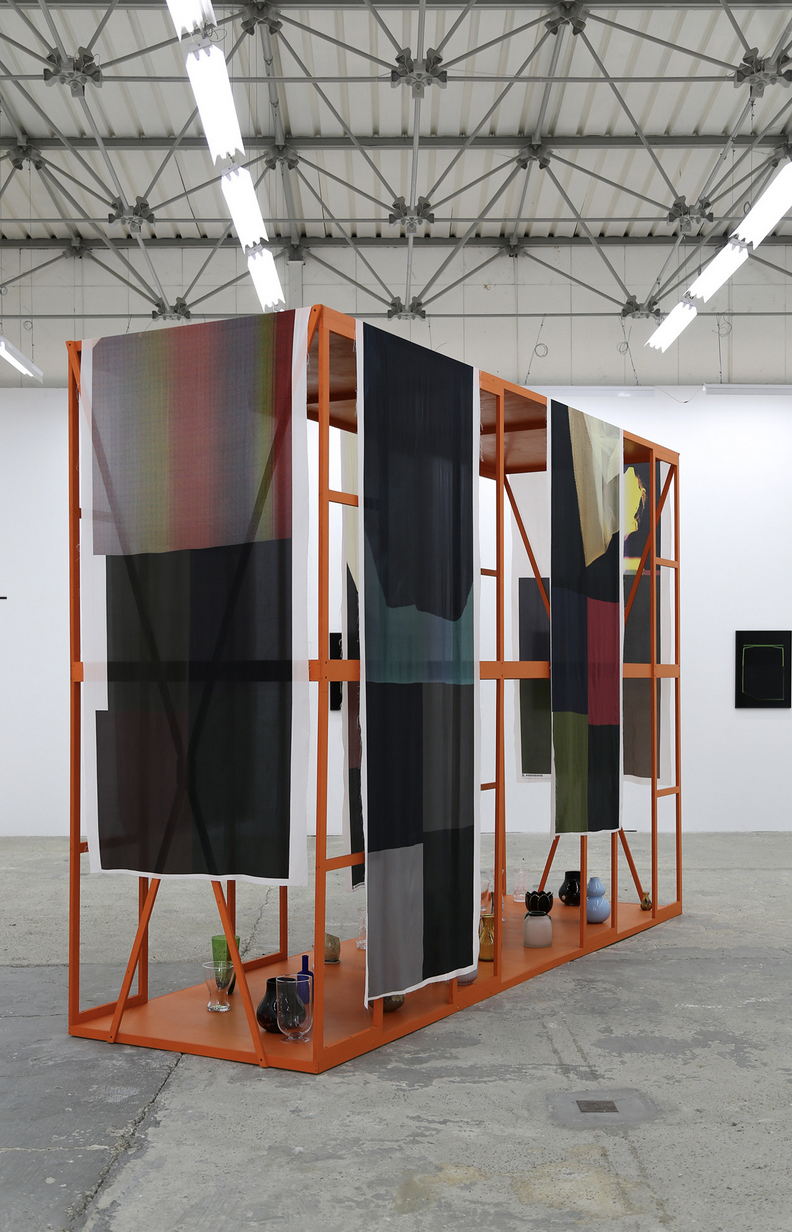Title: Structure
Artists: Julija Zaharijević, Tamara Grčić
Venue: Eugster || Belgrade
Curator: Natalija Paunić
Tamara Grčić, Julija Zaharijević and I met in Berlin a year ago. Neither of their practices are concerned with the supernatural, quite the contrary — they are both deeply interested in reality – yet, I deemed that encounter mystical, knowing that I would take their joint thinking personally once we agreed to do a show together. Since both of their art is profoundly invested in the way things are, it felt as if they were about to address something important about us, as cultural workers, a gallery, a society; something that we probably didn’t even know yet.

However, the way Julija and Tamara both talk about their process reveals they were mostly focused on the dialogue between the two of them. This is how Structure came together: as a desire to create collaboratively through complementation rather than blending. Julija wanted to work with fabric, building on her interest in how materiality participates in perception. She took note of the roughness of the gallery floor and how a touch between concrete and silk might feel. In response to this, Tamara thought of a structure, a specific one from a German circus group, which their acrobats use as a platform. Her idea was to provide a solid object for Julija’s work by replicating this structure in a new way, changing its size in approximation to the gallery space and its color in relation to Julija’s drafts. There is a direct analogy to the original purpose of this readymade: the circus performers are no longer there to use it, but the structure is still alluding to a potential choreography. The silk falls gently over the beams, illustrating a reciprocity between flow and stability, translating the structure’s original grounding role into this new setting.





Since one of the meetings we had with Tamara and Julija happened during Art Basel, it would make sense that choosing to add structure is, in part, related to the observation of a lifestyle that we, workers in the gallery business, maintain — we met in a hectic setting where we felt like we needed to be in many places at once, juggling meetings, clients and physiological needs. One of Julija’s abstract prints showed a scan of a Bottega Veneta sunglasses case. The case is in their signature green and the way it opens on the two-dimensional plane resembles a Rothko, speaking of how simple and literal illusions can be. In an exchange about the piece, Tamara gave her own case to Julija, who scanned it four times, and the prints are now part of this exhibition: their black is velvety, and their green reminds me of The Matrix and of the 80s (a decade I never lived in); of the way people used to see the future and technology as neon, liquid, computational and radical.




The understated reference to Rothko has an origin in Julija’s attentiveness to painting, color and art history, which is noted in the series’ title, Modern Painting. This inclination can be observed, too, in her work God Give Me the Strength to Accept the Things That I Cannot Change (2023), in which the starting point is Isa Genzken’s critique of the corporate appropriation of orchids, but the work itself dissolves a plainly figurative element into an abstract image. Pure Relationship (2021) distinctly employs fashion photography to portray two people with oversized flowers where their heads are supposed to be. The title may initially suggest that a ‘pure relationship’ happens between the two people, but it also exists between the familiarity of the body and the abstract purpose of the flower.

Tamara, who is not a painter, seems to share this interest in the medium from an interdisciplinary perspective. Her latest series of works is a group of watercolors titled Exercise, 2021 – 2023, immediately calling on its purpose. They were made during a time when practicing art was limited to small spaces and restricted resources, but the idea was simply to keep moving with color on paper, and then to capture this movement and draw attention to the body in a similar way that the structure does. In doing so, Tamara, like Julija, appropriates post-painterly abstraction without intending the work as painting. The visual cross-reference between epochs and mediums appears once again in their collaborative decision to include flower vases and pottery (still-life) as part of the structure.

Thinking metaphorically, I felt like “structure” was both the perfect theme and title, not just for the central piece, but for the show as a whole. I wondered if structure was what we’re missing in moments of frantic working hours, art fairs, internal battles on the meaning of it all. Often drawn to magical thinking, I projected a lot of my current thoughts onto the artifacts, convinced that it was them that projected the thinking onto me. My impression, however, is that this convoluted feeling comes from the artists’ intentions, and the eyes that lurk from the flower-heads in Julija’s Pure Relationship indicate them in a direct and disarmingly humorous way. They made me think not only about how we see things and situations through art, but also how the works, potentially, see us back, see through us, and somehow just know us all too well. It is this bouncing back between yourself and the work, when you see everything reflected in it, that extends the dynamic of artistic collaboration as a concept.

